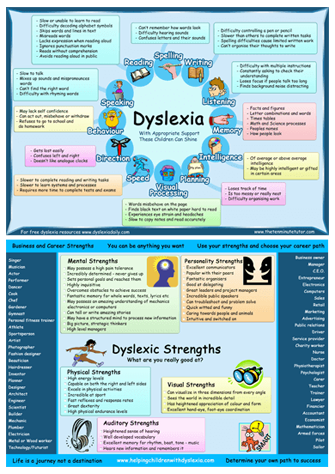Evidence Results

Evidence of Results
Nessy Reading has been thoroughly and rigorously reviewed. Research evidence proves that the Nessy program produces positive educational results.
Nessy was developed specifically to support learners with dyslexia and learning disabilities. It is a computer-based, structured phonics resource for reading and spelling including learning of letter patterns as well as spelling and reading rules. The material includes often humorous visual memory aids, games and activity worksheets. The intervention provides digital learning with a focus on foundational reading and spelling for grades k-5, with reinforcement through written worksheets.
Dyslexia and Multilingualism: Identifying and supporting bilingual learners who might be at risk of developing LD/dyslexia
Research Report
The Nessy program was used in a 12-month study of 465 bilingual children aged 8 to 11. 55 schools participated in the project. Over 43 different first languages were represented.
The most beneficial strategy when dealing with dyslexic learners is direct, systematic, multi sensory instruction (Moats & Farrell, 2005; Brooks et al, 2008). This strategy applies equally well to the rule systems of learning a second language (Sparks & Miller, 2000).This research project explored the impact of a structured multi-sensory intervention program, that incorporated language development and dyslexia-friendly strategies, on the literacy, written language skills and learning experiences of bilingual children, who are learning English as a second language. Over 88% of the reading specialists reported that the children had enjoyed participating in the intervention. Over 60% of reading specialists thought that their children’s reading speed, listening comprehension and writing had improved.
92% of the teaching assistants felt it had helped reading (8% neutral). 77% felt it had helped spelling (16% neutral). 80% felt it was effective overall (7% neutral) and 90% would recommend the intervention activities to others (5% neutral). All the teaching assistants stated that the children had enjoyed using Nessy and found it easy to use. Teaching assistants indicated that the children had gained from using Nessy. Teaching assistants indicated that the training and materials would be useful to the school in the future. They looked forward to continuing to use the materials as they felt thatchildren had grown in confidence and made progress.
“Her writing shows greater confidence she is able to write longer,sustained pieces of text using more adventurous vocabulary. She has a wider spelling vocabulary of high frequency words and attempts at less familiar words show some phonic awareness.”
Systematic teaching of new “phonemes” is essential (the inability to decode in Kindergarten predicts 88% of poor readers in grade 5) and is particularly important for decoding English. Lundberg (1994) revealed a positive relationship between phonological awareness instruction and reading skills in early bilingual learners. Those learners who have been exposed to phonological awareness instruction prior to the age of three are likely to develop more economic processing of both languages in overlapping regions than those who have learnt later (Guron, 2005, in Peer and Reid, 2005). Explicit teaching is the most successful (Mahfoudi & Haynes, 2009) with evidence that training in phoneme and letter knowledge for at risk learners can help them to catch up with normally developing readers (Caravolas, 2005). However, very severely phonologically impaired learners gain less from phonological intervention (Torgesen and Davies, 1996, cited in Wolf, 2008).
Reading in any language rearranges the length and breadth of the brain… there are multiple pathways to fluent comprehension, with a continuum of efficiency taking varied forms among the varied writing systems. (Wolf, 2008, p. 64)
Research into the efficacy of the Nessy Reading program
Nessy Learning has undertaken independent research studies to determine the efficacy of its online reading and spelling programs. The purpose of this report is to provide an overview of the research conducted in the United Kingdom and US.Dr Carbol’s report measures the impact of specialist dyslexia teaching using the Nessy program.
Trials were conducted in 2005 and again in 2011-12. Participating students were aged between 7-11 years. Using standarized reading and spelling assessments to measure student reading age before and after the trial, students on average made a gain of 1 year after 18 weeks of using Nessy Reading. Students used the Nessy program twice a week for 45 minutes – a total of 1.5 hours a week. Several students made notable gains in excess of 2 years. Results for Grade 5 students demonstrated a rate of improvement greater than twice that which could be expected. Average improvement reading single words (decoding skills) 2 years 7 months. The majority of students increased their reading ability by 2 years or greater with one student increasing their reading age by 4 years 3 months.
Positive curriculum outcomes:
87% of students said Nessy helped them learn.
84% said Nessy made learning fun.
The extent to which Nessy is incorporated into the overall learning program will have an impact on the overall learning improvement that results. Nessy Learning recommends three approaches to the implementation within a school program. These are:
a. One 60 minute lesson per week. (Tier 3 general curriculum)
b. 30 minutes twice a week or 20 minutes three times a week (Tier 2 supplemental classroom support)
c. 20 minutes every day or 30 minutes three times per week (Tier 1 intensive instruction)
Singleton‟s (2009) review of published evidence on the impact of specialist dyslexia teaching concentrates on „the core of specialist dyslexia teaching, which is structured multisensory phonics teaching‟ (p22). It is systematic, directly focussed on developing literacy skills and additional to that normally provided. The results are effective in groups of up to 4-5 children even when instruction is provided by non-teachers , providing they are explicitly trained. The review establishes that effective intervention programmes for monolingual English speakers in US and UK, are likely to include: explicit training in phonological awareness – key to success, particularly in relation to sustained benefits; strong focus on phonological decoding and word-level work; supported and independent reading of progressively more difficult texts; practice of comprehension strategies while reading texts; instruction that is systematic, multisensory and intensive.
“Nessy is wonderful. We started using it in small groups but it is so successful that we are now using it for whole classes.
And the results this year have been amazing! The children have made at least 2 years progress in a year and one ha
made 3.5 years progress – and yet she is dyslexic! I can’t tell you how much the children (and teachers) love it.”
Mrs Alison Thompson
The Orton-Gillingham language approach
The Orton-Gillingham (O-G) Language Approach is based on the belief that incorporating specific skills in the educational process has a positive impact on the students’ ability to learn how to read, write and spell. Teachers of the O-G method engage all learners by presenting concepts in ways that visual, auditory, kinesthetic and tactile learners can grasp. The Nessy program is derived from Orton-Gillingham procedures.
The Orton-Gillingham method is a powerful language intervention for children and adults with delayed or non-existent reading skills due to language-based processing disorders or disabilities such as dyslexia.”The National Reading Panel Report (NRPR, 2000) supports the significance ofoffering classroom instruction in phonemic awareness, phonics, fluency, vocabulary, and comprehension. Therefore it endorses the O-G methods because of its multi-sensory applications that engage kinesthetic, auditory, and visual cues; its sequential and cumulative acquisition of alphabetic and phonemic principals; its practical, language-based applications embedded within a variety of language experiences; and its analytic and synthetic repetition with familiar bodies of learning that enable learners to make reasonable linguistic predictions about new language patterns.
The National Institute of Child Health and Human Development (NICHD) supports current research that found that when children’s instruction takes place in a structured, sequential, multi sensory intervention environment, and by educators trained in phonemic awareness, significant gains in decoding skills are evident. Therefore, the Orton-Gillingham Language Approach is a solid, research proven solution for students of all ages and abilities.
Nessy was developed from classroom teaching practices at the Bristol Dyslexia Center. It is an instructional approach intended primarily for use with persons who have difficulty with reading, spelling, and writing. Like Orton-Gillingham, Nessy is focused upon the needs of the individual student and is most effective when used as individualized or small group instruction.
Nessy Reading has been designed to be language-based, multisensory, structured, sequential, cumulative, cognitive, and flexible. Language elements are taught directly and systematically in a highly structured, incremental system of 100 sequential lessons. Typical lessons begin with activities that develop phoneme-grapheme recognition and blending, then advance to whole words and sentences. Spelling activities reinforce reading development.
Nessy is designed to be multisensory. Learning activities combine interactive computer learning with printable activities and manipulative such as card and board games. To maximize effectiveness computer games combine multiple learning pathways: seeing, hearing, doing, saying. An incorrect response triggers the correct answer to display.
Nessy Reading is both diagnostic and prescriptive. Nessy is diagnostic in the sense that it continuously monitors student responses with reports that allow teachers to identify and analyze both the student’s problems and progress. The student begins the program with a computer adaptive assessment that identifies personalized difficulties, then prescribes targets lessons that provide an instructional resolution to those difficulties.
Nessy is a phonics based program that places emphasis upon the alphabetic principle in the early stages of reading development but in more advanced stages Nessy develops word analysis with strategies for chunking words into syllables, prefix, root and suffix.
Every Nessy lesson includes a document of teaching plans with strategies, rules and suggestions for direct instruction. Nessy involves the student in integrative practices that involve reading, spelling, and writing together.
Use of the Dyslexia Quest app as a screening tool
The Dyslexia Quest app was designed to measure a number of aspects of cognitive learning that have been demonstrated through research to have an impact on literacy. The publisher of the Dyslexia Quest indicates that the app has six (6) sub-tests that measure key aspects of cognitive learning.
These are:
- Working Memory
- Phonological awareness
- Processing speed
- Visual Sequential Memory
- Auditory Sequential Memory
- Visual Memory
The 6 sub-tests are usually completed within 20 minutes. Each sub-test is given an explanation of how it impacts upon cognitive learning functions. A very weak performance is an indicator commonly associated with dyslexia. The sub-tests are presented to students in a game format. Each sub-test examines a different cognitive-linguistic learning ability and ends in a brief report giving an ability score. When all sub-tests have been completed an overall diagnosis is given with a more detailed explanation of strengths and weaknesses. This report can be emailed or screen-captured.
The student’s age determines which set of questions they will be given (under 10 years, 11-16 years, 17+) The tests do not have to be taken all at once and if the program is exited, when resumed it will store their responses and resume at the point the activity was left. In addition to the sub-tests, the app also contains an activity of 10 multiple-choice questions that ask the student to subjectively identify how their learning is being affected. Each question set contains an option which is commonly associated with dyslexia, and if selected by the student will produce a positive indicator in the final analysis.






